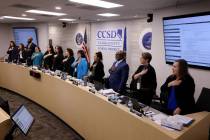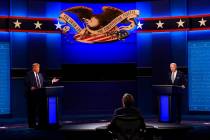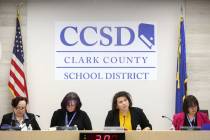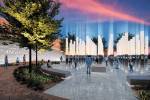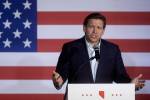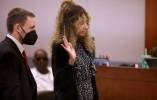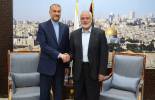More deadly force: Las Vegas police kill unarmed man
On Monday, less than two weeks after the Review-Journal published an extensive investigation of deadly police shootings and the flawed tactics and weak oversight that contribute to some of them, Las Vegas officers killed an unarmed, disabled veteran in an apartment complex parking lot.
The fatal shooting was certainly avoidable and lays bare the need for systemic reforms that could help prevent such incidents in the future.
Monday's killing of 43-year-old Las Vegas resident Stanley Gibson was the 12th incident of deadly force this year by the Metropolitan Police Department, a record high for the force. The shooting is still under investigation, but eyewitness accounts, a video recording of the altercation and police sources indicate some of the circumstances surrounding the shooting fall in line with the troubling findings of the Review-Journal's series, which can be found at www.lvrj.com/deadlyforce. Among them:
-- Police shooting into a vehicle. The Review-Journal series found that about 20 percent of Las Vegas police shootings since 1990 involved officers firing at a car. In many of those shootings, officers put themselves in danger of being run over or violated department policy by shooting at a driver who, while trying to flee, presented no imminent danger to anyone. Mr. Gibson apparently was lost at the Alondra apartment complex and was trying to find his way home. He was killed in his vehicle.
-- Officers expanding a nonviolent situation into a violent one. At least 25 percent of Las Vegas police shootings since 1990 involved police seeing or responding to petty infractions and nonviolent offenses, then escalating them into potentially deadly altercations. Mr. Gibson had not threatened or hurt anyone at the apartment complex, but his slow driving in the parking lot apparently prompted a resident to call police to report a burglary suspect. Police used patrol cruisers to pin Mr. Gibson's car into a parking space, starting the deadly standoff.
-- A mentally ill subject. Many of the most controversial police shootings in recent Southern Nevada history involved mentally ill suspects behaving erratically and failing to respond to police commands. Since 2003, the Review-Journal found, about 20 percent of the people shot at by Las Vegas police were identified as mentally ill. Mr. Gibson, a Gulf War veteran, had run out of his anti-anxiety medication, according to his widow, Rondha Gibson, and had been stricken with paranoia. In fact, he had been arrested by Las Vegas police on Saturday after suffering a mental breakdown.
-- Race. Since 1990, 32 percent of the people shot at by Las Vegas police were black, even though less than 10 percent of the region's population is black. Mr. Gibson was black.
Las Vegas police sources told the Review-Journal that a breakdown in communication contributed to Mr. Gibson's death. Mr. Gibson, panicked and desperate, wouldn't exit his vehicle and was spinning his tires, burning rubber and creating a cloud of smoke. More officers, including supervisors, responded to the scene. The sources said the supervisors decided to use a nonlethal beanbag shotgun to blow out one of the vehicle's windows. When a supervisor fired the shotgun, another responding officer -- likely unaware of the nonlethal measure -- then fired his weapon multiple times into the pinned vehicle's rear passenger window, killing Mr. Gibson.
But why were so many officers still aiming their weapons at Mr. Gibson at close range after half an hour, prepared to use deadly force when he clearly wasn't going anywhere?
Sheriff Doug Gillespie held a news conference Monday to address the fatal shooting of Mr. Gibson and express his concern and his desire to get to the bottom of it, but he wouldn't discuss most of the details. A great deal of information is forthcoming, pending the investigation, and every detail should be made public as soon as it's put on paper.
But many of the reasons why Las Vegas officers shoot more than comparable police departments -- and why this shooting happened -- are outlined in the Review-Journal's investigation. Police need better training in dealing with suspects in cars, nonviolent situations and the mentally ill. Police need better civilian oversight and better internal reviews. The public, meanwhile, needs better transparency and accountability.
If the Review-Journal's investigation wasn't enough to convince elected officials and taxpaying citizens that action must be taken to reduce the use of deadly force by Las Vegas police, the unnecessary death of Mr. Gibson should be.









